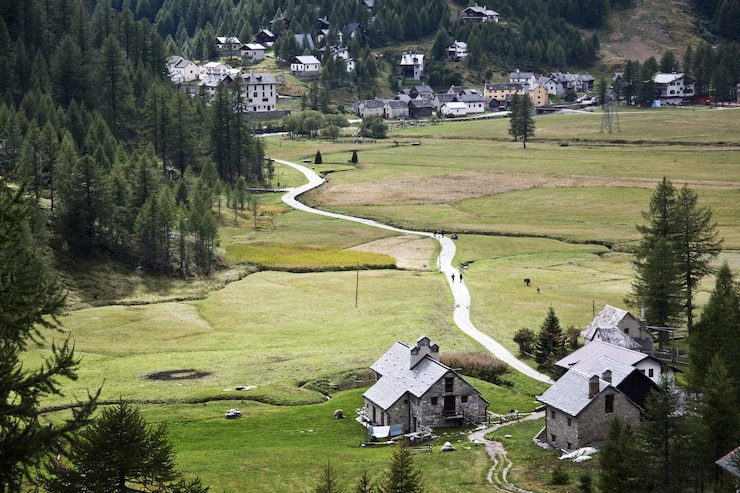Table of Contents
- The Green Magic of Outdoor Spaces
- What Is Sustainable Landscape Design?
- Why It Matters More Than Ever
- The Beauty in Eco-Friendly Choices
- Smart Water Management for a Greener Tomorrow
- Native Plants: Nature’s Best Designers
- How Sustainable Design Adds Real Value
- Creating Spaces That Feel Alive
- The Hidden Power of Maintenance
- A Greener Future Starts Here
The Green Magic of Outdoor Spaces
A garden that hums with life.
A yard that changes with the seasons.
A space where every leaf and drop of water has a purpose.
That’s the power of sustainable landscape design—a way of building beauty that breathes with nature instead of fighting against it. It’s not about fancy tools or endless budgets. It’s about thinking smart, acting kind, and letting nature take the lead.
What Is Sustainable Landscape Design?
Sustainable landscape design means planning and shaping outdoor spaces in ways that protect the planet. It’s about choosing materials, plants, and layouts that save water, cut waste, and support wildlife.
Instead of forcing the land to change, designers work with the land’s natural rhythm. They plant native trees, reuse rainwater, and use sunlight wisely.
Think of it like this: traditional landscaping decorates; sustainable landscaping gives back.
Why It Matters More Than Ever
Climate change isn’t a faraway story. It’s in our daily lives—the heat waves, the water shortages, the dry lawns. And our gardens, parks, and driveways all play a part in that story.
A report by the Environmental Protection Agency (EPA) found that nearly 30% of household water use in the U.S. goes toward outdoor irrigation. Imagine saving even half of that by designing smarter!
That’s why sustainable landscape design is more than a style—it’s a responsibility. Every eco-friendly garden, every low-water lawn, every shaded street helps the planet recover a little.
The Beauty in Eco-Friendly Choices
A sustainable garden doesn’t have to look wild or messy. It can be calm, colorful, and elegant.
Native flowers bring soft colors that change naturally through the year. Stone paths blend with the earth. Water features use recycled rainwater instead of constant refills.
It’s beauty that lasts. And it grows stronger with time.
Designers today understand that the most eye-catching spaces are often the simplest ones—where texture, light, and movement replace heavy decoration. Sustainable landscape design creates that balance between charm and care.
Smart Water Management for a Greener Tomorrow
Water is the lifeblood of any garden. But wasting it is easy when sprinklers run every morning without reason.
Sustainable design fixes that with systems that listen to the soil. Smart irrigation, rain barrels, and drip systems deliver just what’s needed.
Plants that can handle dry days—like lavender, rosemary, or succulents—cut the demand even more.
Here’s a quick view of how water-wise choices make a difference:
| Method | Water Saved Per Year (Approx.) |
| Drip irrigation | 20–30% less than sprinklers |
| Rainwater harvesting | Up to 40% reduction in tap water use |
Each drop counts. And every smart choice adds up to a huge change.
Native Plants: Nature’s Best Designers
When you let local plants take the stage, they thrive effortlessly.
Native plants are made for your soil, your climate, and your weather. They need less fertilizer, less water, and less fuss. They attract local birds and butterflies.
A meadow of native wildflowers, a row of hardy shrubs, or even a patch of native grasses can make your yard self-sufficient.
That’s the secret power of sustainable landscape design—it doesn’t fight nature; it celebrates it.
How Sustainable Design Adds Real Value
Eco-friendly spaces don’t just save the planet—they boost property value too.
Homes with green landscapes often sell faster and for more money. According to the National Association of Realtors, well-landscaped homes can add up to 15% more value compared to homes with plain yards.
That’s because buyers today want outdoor spaces that look good and do good.
So, when you invest in sustainable landscape design, you’re not only building a greener yard—you’re building wealth.
Creating Spaces That Feel Alive
Think about stepping outside into a yard that smells of fresh soil after rain.
You hear bees buzzing, see soft light bouncing off wet leaves, and feel the calm that comes from being close to something real.
That’s the emotional side of sustainable landscape design.
It’s not just about the materials or the plants. It’s about the feeling—of peace, freshness, and belonging.
Spaces like this lower stress, boost focus, and create places where people love to spend time.
It’s a design that doesn’t just look alive—it is alive.
The Hidden Power of Maintenance
Even eco-friendly gardens need a little love.
Sustainable design makes that easier too. Compost replaces chemical fertilizers. Mulch keeps soil moist and healthy. Hand weeding replaces pesticides.
Instead of heavy upkeep, you get a rhythm—a cycle where waste becomes food, and care becomes part of life.
The best part? Maintenance becomes mindful. You feel the connection between what you grow and how you live.
A Greener Future Starts Here
We often think change needs big actions—huge projects, global shifts, massive campaigns. But sometimes, it begins with a simple patch of green outside your window.
Sustainable landscape design proves that beauty and responsibility can live side by side. It turns plain yards into ecosystems. It turns ordinary homes into examples of care.
A single native tree, a reused drop of water, a compost pile—these are not small acts. They are quiet revolutions in the way we live.
So, the next time you step into your garden, look closer. The future is already growing there.
